This second article in a series about our visit to the Denver Mint offers information and photos about its public tour.
Grand marble hallways complete with massive chandeliers, historic murals, gold bars worth hundreds of thousands of dollars, a machine gun nest and a story of internal employee theft are just a few of the intriguing items found while taking the public tour of the United States Mint at Denver, Colorado.

This tour is chock-full of information and displays that are sure to educate, entertain and enthrall all but the most critical of guests.
For reference, I must compare pubic tours of the Philadelphia and Denver Mints as they are each fresh in my memory from our two recent trips. Actually, they are the only public tours you can take of U.S. Mint production facilities since those at West Point and San Francisco are closed to the public. (We have visited and reported on all four this year. Each has their own charms.)
In Philadelphia, guests are treated to a museum-like experience in a modern, self-guided come and go environment that operates most weekdays 9 AM – 4:30 PM. In contrast, the public tour at the Denver Mint requires reservations as it is led by a guide.
The two facilities have both relocated and operated within different buildings over the years. Coin production in the United States began in Philadelphia way back in 1792. The current and fourth Philadelphia Mint facility opened in 1969. It is easily the biggest of the Mint’s four production plants. The first Denver Mint opened in 1863 to serve as an assay office. Denver only started striking coins for the government in 1906 after the completion of a larger facility that was modeled after the Medici Riccardi Palace in Florence, Italy.
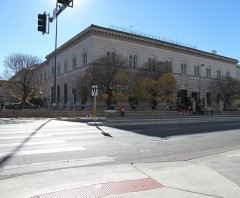 |
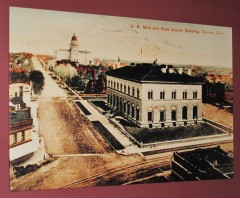 |
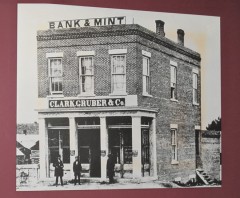 |
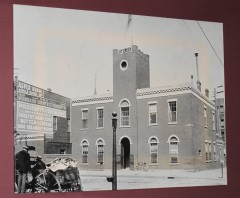 |
The older building of the Denver Mint is a reason alone to take the tour. Its Grand Hallway is awe-inspiring. The marble, chandeliers and murals evoke a true grandeur one expects of a landmark structure.


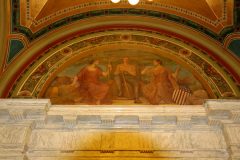 |
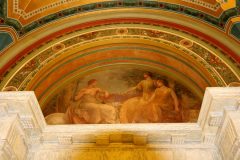 |
The more than century-old building is drawn into the human condition by the placement of a machine gun nest added to the grand entry in 1934. For many years (through 1963), the nest was manned by U.S. Mint police armed with the likes of Thompson sub machine guns, Winchester repeating rifles, and tear gas-filled night sticks. They had access to a switch capable of releasing additional tear gas in multiple locations throughout the building.

The reasons for the security measures become clear in other parts of the tour. In its first year of operation, the Denver Mint produced 167,371,035 gold and silver coins worth about $27 million. Production increased in later years requiring intensive steps to safeguard Mint assets.
Not all were focused on protecting government property, however. On the tour, we were regaled with the tale of Orville Harrington. Orville was a U.S. Mint employee who managed to steal fifty-three bars of gold alloy over a five-month period only to be arrested on February 4, 1920.
Speaking of gold bars, one of the most impressive parts of the tour was the opportunity to see three .999 fine gold bars weighing 27 ½ pounds apiece. These three bars are just a sample of those found in the lower decks of the building and in other U.S. Mint facilities.

A recount of the public tour and Denver Mint history would not be complete without mentioning its production of circulating coins. If you recall, the Denver Mint struck just over 167 million coins in its first year. Today, more than 50 million coins can be produced in a single day, though a typical one sees an output more in the range of 20 to 24 million coins. Its coin production total through November hit nearly 5.7 billion coins. Also produced at the Denver Mint are collector sets and commemorative coins.

Special moments in the public tour include watching circulating coins being made and numismatic sets getting packaged. In upcoming articles, we’ll give a closer look, with both photos and videos, of the coin production and numismatic operations.

More Public Tour Photos from the US Mint at Denver, Colorado
Below are more photos. They show just a few of the many exhibits found throughout the public tour. Also and importantly, Denver Mint Public Tours are currently suspended until Feb. 27, 2014. Improvements are underway to offer an even better experience.







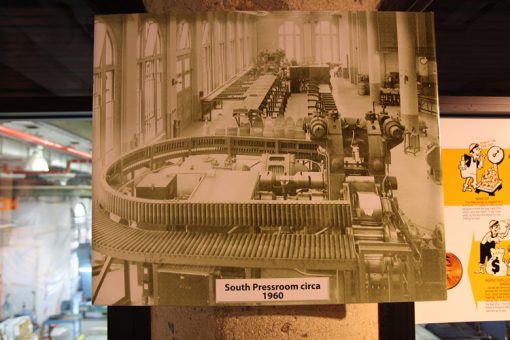

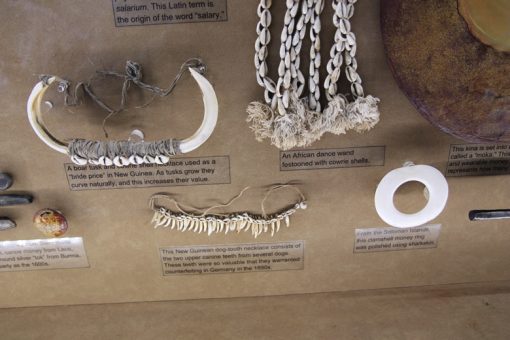





Next Article in Series About the U.S. Mint facility in Denver
The first article in our series about the Denver Mint offers an overview of the facility. The third and immediate next article was published on Jan. 6, 2014. It describes how the Mint makes its coin dies from rods of steel. Coin dies are installed in coining presses and impart their designs onto metal blanks to create coins. Later articles in this series show how coins for circulation are produced and the packaging of numismatic sets. Links to all of the articles are found in the right column.





